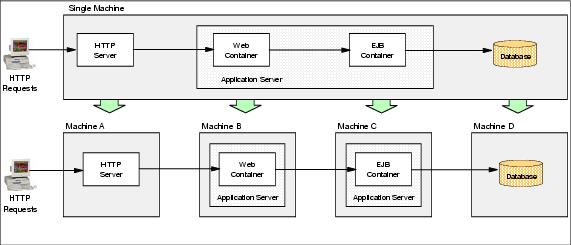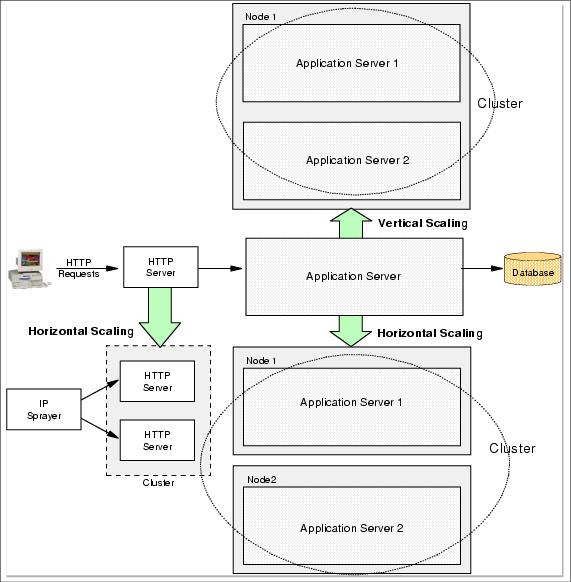Strategies for scalability
On demand computing requires the ability to scale up or scale down an application, depending on the current requirements. Thus, scalability is important to improve efficiency and reduce cost.
We start by discussing scalability strategies using WAS that can help us in ensuring high availability, load balancing, and removing bottlenecks.
The basic infrastructure components that make up a WebSphere application are:
- HTTP server and HTTP plug-in
- Web container
- EJB container
- Databases
IBM WAS V5.0 and higher implements Web containers and EJB containers in each appserver. The application servers each run in their own JVM.
If we have all components co-located on a single machine, they might:
- Compete for machine resources
- Influence each other's behavior
- Have unauthorized access to strategic resources
One strategy is to physically separate some components, preventing them from competing for resources (CPU, memory, I/O, network, and so on) or to restrict the access to a resource from another machine (for example, inserting a firewall in order to protect confidential information). This approach is represented in Figure 3-2.
Figure 3-2 shows the Web container and the EJB container separated on different machines. Although this is a possible configuration, it is not recommended because doing so results in out of process calls from the EJB clients in the Web container to the EJB container and will likely have a negative impact on performance. As a result, we will not cover this split JVM topology further in this chapter.
We can also exploit another strategy, distributing the load among the most appropriate resources, and using workload management techniques such as vertical and horizontal scaling, as described in 1.3.3, Workload management using WebSphere clustering. WASs can benefit from vertical and horizontal scaling and the HTTP servers can be horizontally scaled on a clustered configuration. The use of these techniques is represented in Figure 3-3.
Starting with 3.4, Single machine topology, we describe some basic topologies, beginning with a single machine topology and expanding it to a complex topology where different techniques are applied on a set of distributed machines, in order to provide a reliable and efficient processing environment.
Figure 3-3 Vertical and horizontal scaling
WebSphere is a trademark of the IBM Corporation in the United States, other countries, or both.
IBM is a trademark of the IBM Corporation in the United States, other countries, or both.

